|

On eBay Now...
OLD kokeshi japanese wooden doll Signed Sanshiro Ishiyama (1909–1996) K105 For Sale
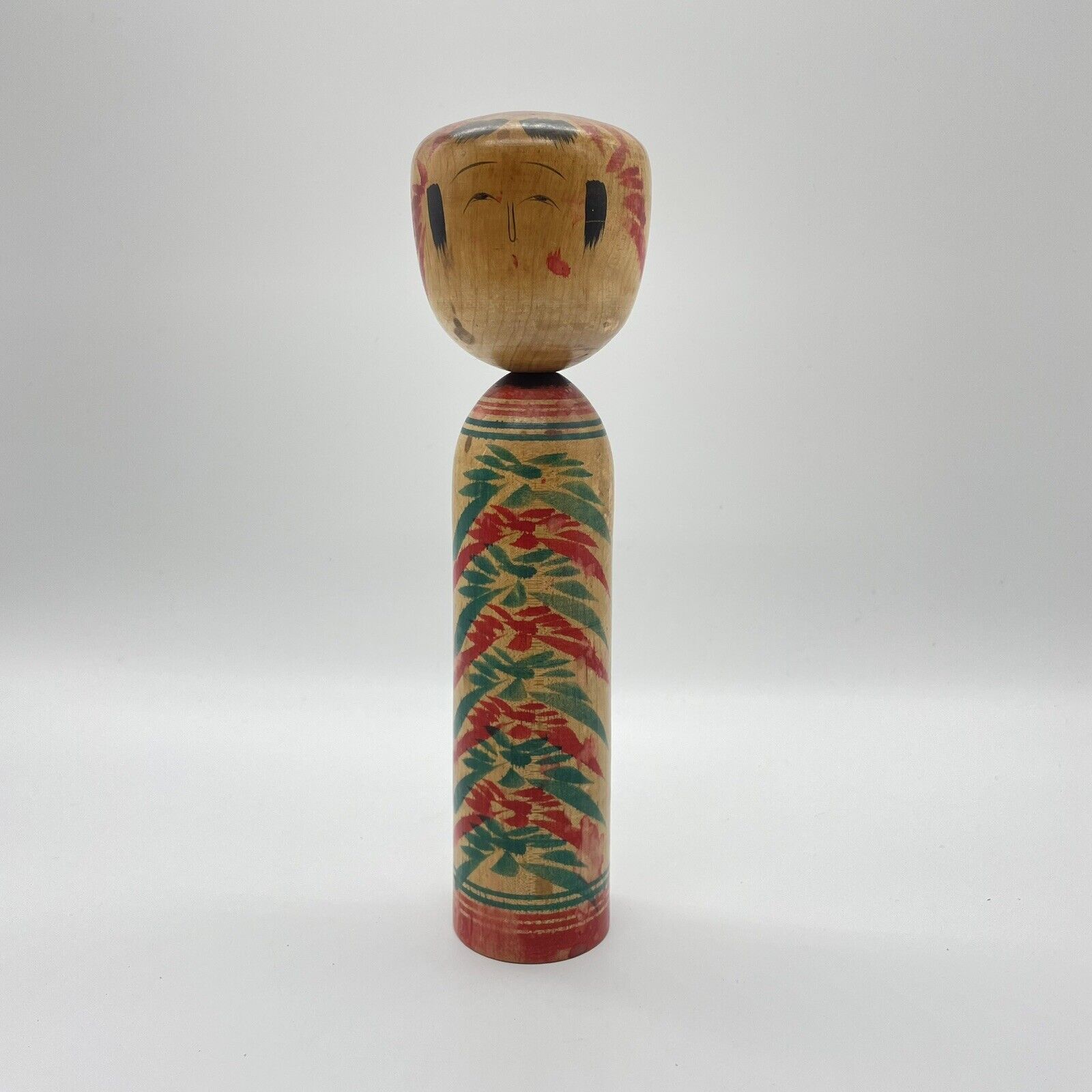
When you click on links to various merchants on this site and make a purchase, this can result in this site earning a commission. Affiliate programs and affiliations include, but are not limited to, the eBay Partner Network.

OLD kokeshi japanese wooden doll Signed Sanshiro Ishiyama (1909–1996) K105:
$50.00
OLD kokeshi japanese wooden doll Signed Sanshiro Ishiyama (1909–1996) K105
About This Items- Kokeshi hand made bySanshiro Ishiyama (1909–1996)
Size 9.44 inch / 24cmSanshiro Ishiyama (1909–1996) Lineage: Zao Takayu Master: Ichiro Shinano, Masao Sato Disciples: Kazuo Ishiyama, Kenichi Ishiyama, Hiroshi Mito, Kiheiji Ishiyama was born on April 28, 1909, as the eldest son of Saburo Ishiyama, a carpenter from Ashizawa, Yamadera Village, Yamagata Prefecture. The Ishiyama family had been carpenters for two generations in Yamadera. Saburo, a highly skilled carpenter, suffered from long-term stomach issues due to his demanding work. As a result, he decided not to have his son continue as a carpenter but to have him train as a woodturner instead. After completing his studies at Yamagata Industrial School, Sanshiro requested an apprenticeship through the Odawara town office. Consequently, in the spring of 1924, at the age of 16, he became an apprentice to Ichiro Shinano in Tainochaya, Yumoto Village, Ashigarashimo District, Kanagawa Prefecture (now Hakone Yumoto, Odawara City). He often learned from Ichiro’s son, Nobukichi. The Shinano family primarily produced wooden toys, and Sanshiro mainly turned items such as nested daruma dolls, yoyos, Seven Lucky Gods, and twelve eggs. In July 1929, Sanshiro returned to Yamadera and started his own business. He learned kokeshi painting from Masao Sato, a disciple of Chojiro Okazaki from Zao Takayu. Eventually, he opened a shop within the precincts of Risshakuji Temple in Hōjusan, Yamadera. Around this time, Masao Sato retired from woodturning and passed all his tools to Sanshiro. Sanshiro married Kiku from Tendo, and they had two sons, Kenichi and Shoichi. Kenichi initially learned woodturning from Sanshiro but later changed professions. The first literature mentioning Sanshiro was the June 1937 issue of Kokeshi Tenbo, which featured two photos of his kokeshi dolls. It noted that he had learned toy-making in Hakone about 15 years prior and started making kokeshi after returning to Yamadera Village, Higashimurayama District, Yamagata Prefecture. The magazine described his work as resembling the Takayu style but with a unique charm. Later, his kokeshi were also featured in Kokeshi to Sakusha. In 1939, Sanshiro switched from a foot-operated lathe to a power lathe. In October 1945, his brother Kazuo Ishiyama became his apprentice, and in 1948, his nephew Hiroshi Mito also started training under him. In 1969, to commemorate the centennial of the Meiji era, the Yamagata Kokeshi Association, including Sanshiro and his brother Kazuo, worked on establishing a kokeshi monument. This monument was completed in October 1969 in the precincts of Hie Shrine, adjacent to Risshakuji Temple. Kenichi, Sanshiro’s eldest son, worked at an ironworks but began learning woodturning from Sanshiro in 1973 and started making kokeshi dolls. Sanshiro continued making kokeshi in Yamadera after the war and passed away on February 16, 1996, at the age of Used
About Kokeshi
Kokeshi are traditional Japanese wooden dolls, characterized by their simple yet elegant design. They originated in the Tohoku region of Japan during the Edo period (1603-1868). These dolls are made from wood and typically feature a simple cylindrical body with a rounded head. Here are some key aspects of Kokeshi dolls: Types of KokeshiTraditional Kokeshi (Dento Kokeshi) - These are the original forms of Kokeshi, handcrafted and typically passed down through generations of artisans.
- They are classified into several regional styles, each with its own unique features and patterns, such as Naruko, Tsuchiyu, Yajiro, and others.
- The designs often include hand-painted floral or geometric patterns, and the dolls are usually left unvarnished.
Creative Kokeshi (Shingata Kokeshi) - These emerged after World War II and allow for more artistic freedom.
- Unlike traditional Kokeshi, they are not restricted by regional styles or patterns, leading to a variety of innovative designs and forms.
- They may include more elaborate decorations, different shapes, and varnished style=\"border: 0px solid rgb(227, 227, 227); box-sizing: border-box; --tw-border-spacing-x: 0; --tw-border-spacing-y: 0; --tw-translate-x: 0; --tw-translate-y: 0; --tw-rotate: 0; --tw-skew-x: 0; --tw-skew-y: 0; --tw-scale-x: 1; --tw-scale-y: 1; --tw-pan-x: ; --tw-pan-y: ; --tw-pinch-zoom: ; --tw-scroll-snap-strictness: proximity; --tw-gradient-from-position: ; --tw-gradient-via-position: ; --tw-gradient-to-position: ; --tw-ordinal: ; --tw-slashed-zero: ; --tw-numeric-figure: ; --tw-numeric-spacing: ; --tw-numeric-fraction: ; --tw-ring-inset: ; --tw-ring-offset-width: 0px; --tw-ring-offset-color: #fff; --tw-ring-color: rgba(69,89,164,.5); --tw-ring-offset-shadow: 0 0 transparent; --tw-ring-shadow: 0 0 transparent; --tw-shadow: 0 0 transparent; --tw-shadow-colored: 0 0 transparent; --tw-blur: ; --tw-brightness: ; --tw-contrast: ; --tw-grayscale: ; --tw-hue-rotate: ; --tw-invert: ; --tw-saturate: ; --tw-sepia: ; --tw-drop-shadow: ; --tw-backdrop-blur: ; --tw-backdrop-brightness: ; --tw-backdrop-contrast: ; --tw-backdrop-grayscale: ; --tw-backdrop-hue-rotate: ; --tw-backdrop-invert: ; --tw-backdrop-opacity: ; --tw-backdrop-saturate: ; --tw-backdrop-sepia: ; --tw-contain-size: ; --tw-contain-layout: ; --tw-contain-paint: ; --tw-contain-style: ; list-style-position: initial; list-style-image: initial; margin: 0px 0px 1.25em; padding: 0px 0px 0px 1.625em;\">
- Materials: Made from different types of wood, such as cherry, dogwood, or chestnut, each providing a distinct texture and finish.
- Construction: Traditionally, Kokeshi dolls are lathe-turned and hand-painted. The head is often a separate piece attached to the body.
- Design: Typically, the dolls have no arms or legs. The facial features are simple, often just eyes and a mouth, with minimal detail.
- Sizes: They come in various sizes, from a few inches to over a foot tall.
Cultural Significance- Symbolism: Kokeshi dolls are often associated with protection against evil and are believed to bring good luck. They are sometimes given as gifts for good fortune or to comfort someone who is grieving.
- Craftsmanship: The making of Kokeshi dolls is a respected art form, with many artisans dedicating their lives to perfecting their craft. Each region\'s style represents its unique cultural heritage.
- Modern Appeal: While rooted in tradition, Kokeshi dolls have seen a resurgence in popularity, appealing to both collectors and those interested in traditional Japanese art and culture.
Collecting Kokeshi- Authenticity: Collectors often seek traditional Kokeshi made by renowned artisans, each piece often signed and dated.
- Value: The value of a Kokeshi doll can vary greatly depending on its age, condition, and the reputation of the artist.
- Display: They are commonly displayed in homes, both as decorative items and as symbols of cultural pride.
Kokeshi dolls embody a blend of simplicity and elegance, making them cherished items in Japanese culture and a fascinating subject for collectors and enthusiasts worldwide. Shipping- We always send the item with a tracking number. So please place an order without any concern on delivery. You can always track the delivery status.
- Shipping is only available to the address registered in . If you want us to send another address, please change your address on and then place an order.
- Shipping is available from Monday to Friday. Weekends are not available because freight (shipping) companies are closed.
- We do not mark merchandise values below value or mark items as ?gifts? ? Japan, US and International government regulations prohibit such behavior.
- If your address is in the remote areas defined by the freight (shipping) company, please pay the additional shipping fees with PayPal.
About Importer\'s ObligationImport duties, taxes, and charges are not included in the item price or shipping cost. These charges are the buyer\'s responsibility. Please check with your country\'s customs office to determine what these additional costs will be prior to offerding or buying. Thank you for your understanding.

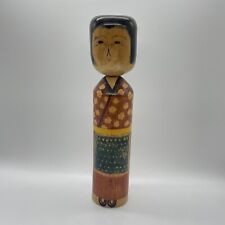
14" OLD Large kokeshi japanese wooden doll by Private Artist Shigeru Saito K111 $120.00
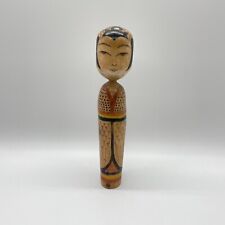
10" OLD kokeshi japanese wooden doll by Private Artist Shigeru Saito K114 $75.00
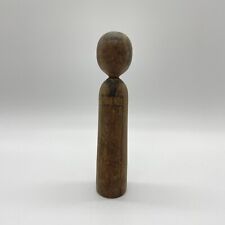
Very OLD kokeshi japanese wooden doll Unique Face WW2 $75.00
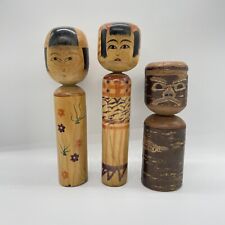
OLD kokeshi japanese wooden doll by Private Artist Shigeru Saito Unique lot K123 $65.00
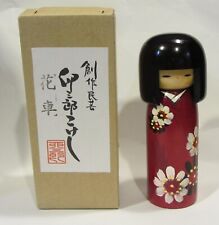
Kokeshi Old Doll Vintage Wooden Kimono Girl 7.5" Japan $22.99

OLD kokeshi japanese wooden doll by Private Artist Shigeru Saito K121 Unique lot $60.00

9" OLD kokeshi japanese wooden doll by Private Artist Shigeru Saito K118 YAKUZA $65.00
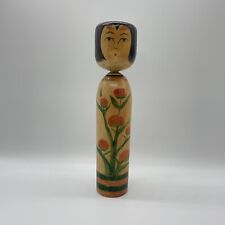
12" OLD Large kokeshi japanese wooden doll by Private Artist Shigeru Saito K112 $100.00
|